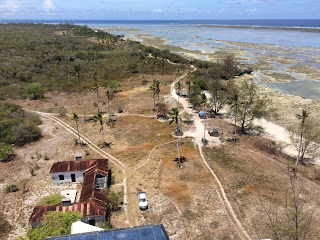Right, I know this is remarkably late and despite it already being mid-September by the time I'm getting round to writing this, it has to be said that the first week in August wouldn't be the first week in August within a visit to Scotland's premier wargame show, Claymore.
 |
| East Neuk Irregulars - Anglo-Iraq War 1941 |
Every year I marvel at long we've been coming to Claymore (since 1979 I think: estimates vary) and also how fashions and interests change. For example this year there were no Very British Civil War (VBCW) games on at all, but then perhaps as something similarly pointless and costly is playing out inexorably in British politics at the moment, there's a reason for this.
Anyway, to the games and the ones that caught me eye (and/or could photograph before my phone filled up). First up is Gourock Wargames Association and their D-Day Orne River Bridge game.
 |
| Getting the Orne just looking at this frankly. |
I'm always impressed when a terrain piece is scratch-built and/or purchased that is so recognisable that it can only be used for one scenario. That's dedication. Then there was the Carry On Up the Khyber participation game (Leuchars Veterans) that looked quite good.
 |
| Just waiting for the Khazi of Kalabar to arrive. |
One of my favourite Carry On films that, particularly the dinner party scene. Also Terry Scott (Sgt MacNutt) asking Charles Hawtree (Pvt Widdle) what he was doing painting a red line across the compound "That's t thin red line - they'll never get past this!" "Widdle, if you don't get out of here, I'll paint a thin red line across your thick white backside!" Ah classic stuff.
Another interesting one was the Iron Brigade's Napoleonic game, supposed to be a Seven Years War battle (Zorndorf? I didn't write it down) so with Russians fighting Prussians. I was confused by that at first.
 |
| Prussians v Russians |
Finally in the 'atrium', there was an interesting one put on by Supreme Littleness Designs / University of Edinburgh. This was a siege of Byblos crusader castle in Lebanon, which was billed as "wargame terrain and scenarios design meets academic research".
 |
| Byblos Castle |
The idea was that this would be a fusion of game design, which is of course a 'big thing' at the moment, and no doubt subject to academic study itself, and the findings of medieval historians, one of whom (from Edinburgh University) was there to talk to (very interesting guy). I was particularly interested because I had actually been to Byblos in 2001 so I knew what he was talking about. Further information on the project can be found
here.
Moving on to the main hall, I was impressed with East Neuk Irregulars' (they're from Fife) Anglo-Iraq War 1941. I like the silver biplanes from that period especially.
 |
| Nice. |
Staying in the main hall, the prize for the longest game (dimensionally) went to Chris & Pat Brown / Aberdeen Wargames Club with their Road to the Reich game. I couldn't quite get it all into one shot.
 |
| I'm tired just looking at that |
Other games included 'T in the Park' (Berlin 1945) by Kirrimuir Wargames Club that was getting an official prize of some sort at one point (best game?).
 |
| Russian tourists invade Berlin |
That Reichstag got a fair old battering before and after the war didn't it. Finally, there was the Suez 1956 game put on by the very friendly Gottenburg Gamers.
 |
| East of ... where was it again? |
It was a participation game but we just chatted to one of the gamers (I forgot his name). What was sorted out was that they weren't actually from Gottenburg or indeed Swedish, but were actually from East Lothian (near Edinburgh) and based in a pub called The Prestoungrange Gottenburg. I think some of them were ex-SESWC.
So overall, another good year and I hope that I'll get more posts done in the months before August comes round again next year.





































